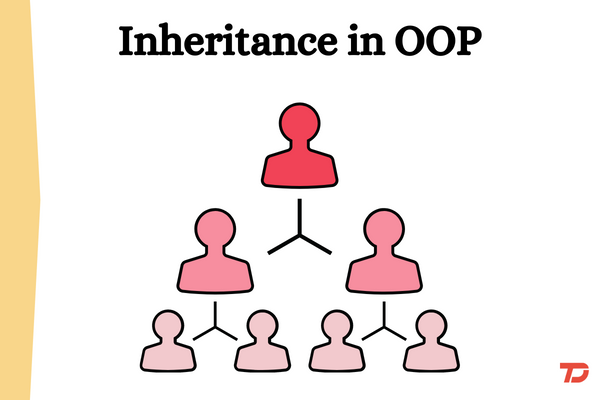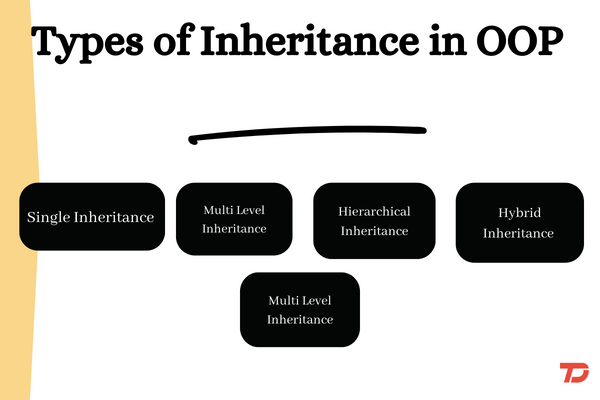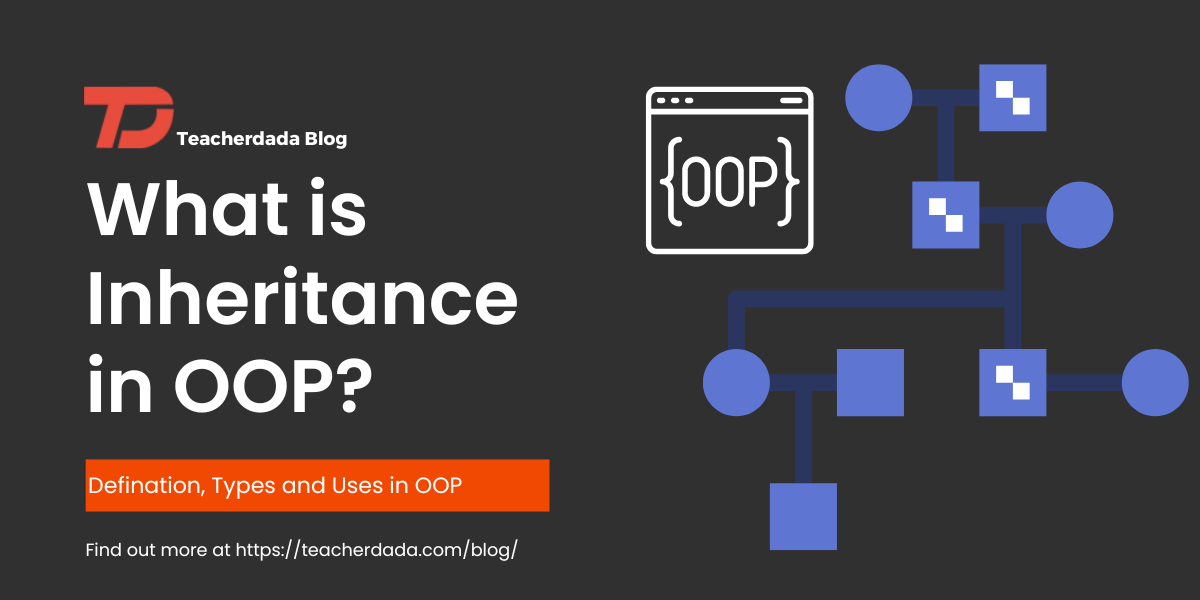Oop is a programming language that became popular in the early days of the internet. It emphasizes inheritance, which makes code harder to read but also allows programs to be more flexible and efficient. Inheritance allows programs to create more complex structures, which can save time and effort. This blog will help you know what is inheritance in OOPs? its type and major difference.
Option 1: inheritance in OOPS is the process of passing on characteristics from one parent to a child. This can be done in many ways but is most commonly done through inheritance from a parent class to a child class. Inheritance enables you to create classes that inherit from another class, and then change the properties and methods of the child classes without affecting the parent class.
Option 2: using a new keyword when inheriting is a common way of implementing inheritance.

Introduction: What is Inheritance in OOPs?
In OOP, inheritance is a way to define relationships between classes. Inheritance allows developers to create more versatile and maintainable code. Here are some tips on how to use inheritance in your code.
Inheritance is the process of creating new objects that “inherit” the properties of other objects. This can save time and code when you want to create new objects that are similar to an existing object. Organizing code by class (and sub-class) is one of the core concepts of OOP. Inheritance is how we make this happen in code. When you create a class in code, you can specify that one or more subclasses inherit from that class.
This means that all subclasses inherit the methods and variables defined in the parent class. The child classes only need to define what’s different about them. This helps you organize code and make it easier to understand. Inheritance also makes it easy to create related objects with some standard functionality. This can save a lot of time and reduces the risk of introducing bugs.

Benefits of Object-oriented programming OOP inheritance:
- One of the major benefits of inheritance in OOPS is the ability to create new objects based on existing ones.
- This process is known as “inheritance,” but it has several different implications in OOP. The “P” and “O” in OOP stand for “private” and “public” visibility, respectively.
- When working with classes, variables and functions can be made accessible to certain instances or all instances in the class hierarchy.
- There are pros and cons to each approach, but understanding what makes one better for a specific situation can help you pick when to use one over the other.
Suggested course for Learning
Learn C# Coding Intermediate: C# Classes, Methods and OOPs
Inheritance in OOPs Main Types
The process of creating a new class from an existing class is known as the Derived class. Inheritance offers a plethora of benefits that ease the process of programming for developers. The most important benefit of all is the reusability of code that allows the programmers to not spend extra time building new ones. They can simply use the existing classes and save their time and effort.

Types of Inheritance in OOP are the way inheritance is implemented. The process of implementing inheritance could be done in Object-Oriented Programming languages. They include:
- Single Inheritance
- Multi Level Inheritance
- Hierarchical Inheritance
- Hybrid Inheritance
- Multipath Inheritance
- Multiple Inheritance
- Single Inheritance
Under this Inheritance process, a new class (derived class) is created from a single existing class (base class).
For instance, Class A is the parent class and Class B is the child class. Under Single inheritance, Class B inherits from Class A.
- Multi-level Inheritance
Under this, a new class (derived class ) is created from another derived class only.
For instance, there are three classes created namely A, B, and C. Under Multi-level inheritance, class C inherits its properties from class B and class B inherits from Class A. Hence, class C inherits its properties from classes A and B indirectly. That is why it is called Multi-level inheritance.
- Multiple Inheritance
Under this inheritance, a derived class that is new is created from more than 1 base class.
For instance, there are classes A, B, and C. Here class C derives its properties from two base classes that are class A and B (parent class).
- Multipath Inheritance
Multipath inheritance is a process where a derived class (new class) is created from more than 1 derived class and the base of another derived class.
For instance, Class D inherits properties and behavior from two derived classes B and C that further derive their properties from Class A. both class C and B inherit Class A. This is why we called it a Multipath inheritance.
- Hierarchical Inheritance
Under this inheritance, more than one derived class is created from one parent class and more derived classes are created from derived classes that act as a parent class.
For instance, class A has two derived classes class C and B. Now class C and B. Class C has further two children classes that are D and E and Class B has two further children that are Class F and G.
- Hybrid Inheritance
Hybrid as the word suggests is a type of Inheritance in OOP that is a combination of the above-mentioned types of inheritance. It could be multilevel and multi-path or could be multilevel and hierarchical inheritances.
How to implement Inheritance in OOPs?
There are a few different ways to implement inheritance in OOP. Most languages have syntax for it, but there are a few different styles.
Difference between private and public inheritance in oop
The visibility of attributes within the class is not related to the visibility of the attributes in the subclass. Private attributes can be seen by all subclasses. Public attributes can be seen by all subclasses and everything outside the class hierarchy. Private attributes can only be seen by their own class. Public attributes can only be seen by the entire class hierarchy. The only difference between private and public attributes is who can see them.
When to use protected OOP Inheritance?
Protected inheritance is a bit different and is not found in all languages. A protected method or variable is only visible to its own class and any subclasses below it in the hierarchy. The syntax is the same as private but with the addition of a “+” sign. In many cases, this can be a great fit.
Limitation of protected oop inheritance in python
Protected methods can only be called from subclasses, not from outside the class hierarchy. This is the same as private, but each class can only have one parent class, so there can only be one level of protected methods.
This can easily lead to code that is difficult to follow if you have a lot of subclasses. If you have a lot of subclasses and you want them to access protected methods, you have to put those methods in the parent class. This can lead to messy code, where every class has access to a lot of methods that it doesn’t need.
Difference between private and protected oop inheritance
Private attributes can only be seen by the parent class. Protected attributes can only be seen by the parent class and any subclasses below it. Private and protected can be used interchangeably and have no real difference.
Related guide – You will like to read
Difference between OOP and POP
What are the 4 types of inheritance?
Types of Inheritance in OOP are the way inheritance is implemented. The process of implementing inheritance could be done in Object-Oriented Programming languages. They include:
Single Inheritance
Multi Level Inheritance
Hierarchical Inheritance
Hybrid Inheritance
Multipath Inheritance
Multiple Inheritance
Single Inheritance
Conclusion
Inheritance is a powerful feature of OOP, but it can also be confusing. If you are wondering how a certain class will interact with others, it can be helpful to know the visibility of attributes. This can help you understand how to use a class or create your own when necessary. One of the major benefits of inheritance in OOPS is the ability to create new objects based on existing ones.
This process is known as “inheritance,” but it has several different implications in OOP. The “P” and “O” in OOP stand for “private” and “public” visibility, respectively. When working with classes, variables and functions can be made accessible to certain instances or all instances in the class hierarchy. There are pros and cons to each approach, but understanding what makes one better for a specific situation can help you pick when to use one over the other.
You may like to read related article on OOP

